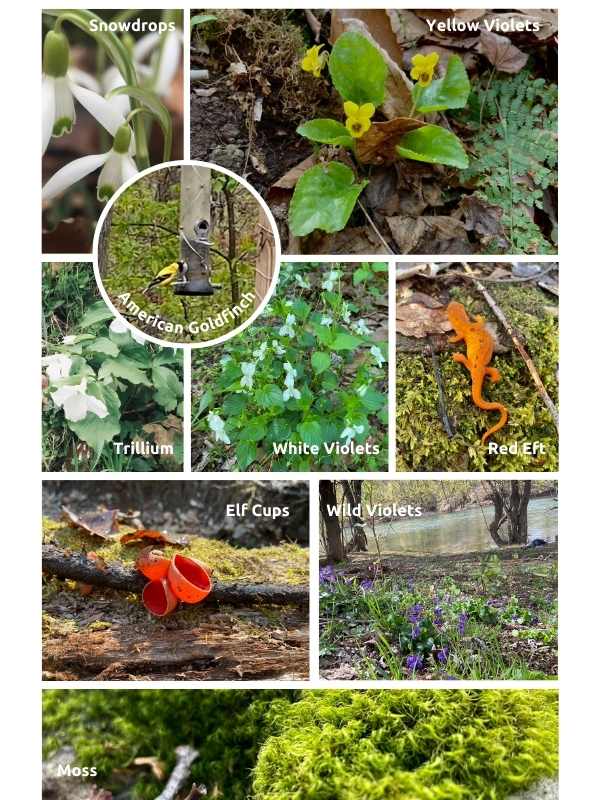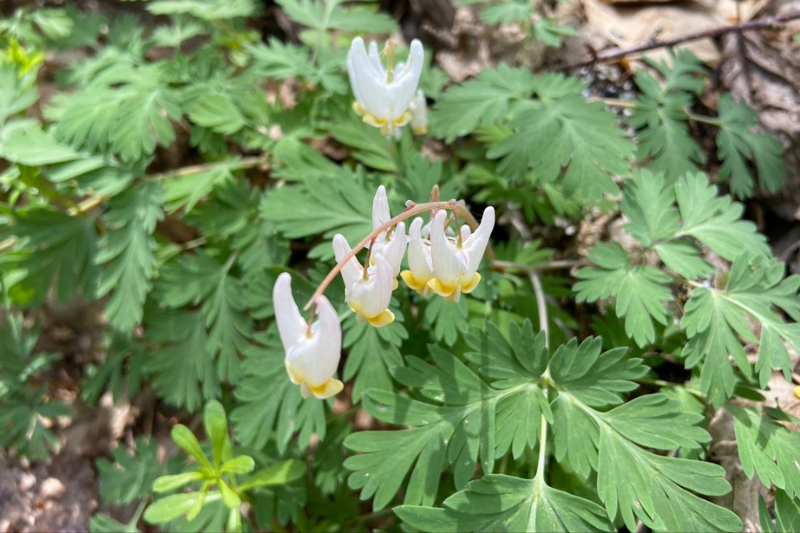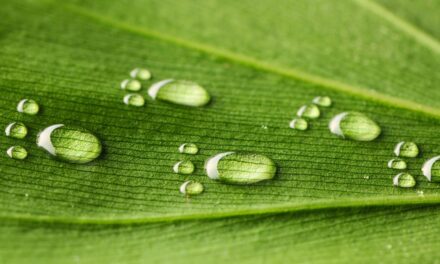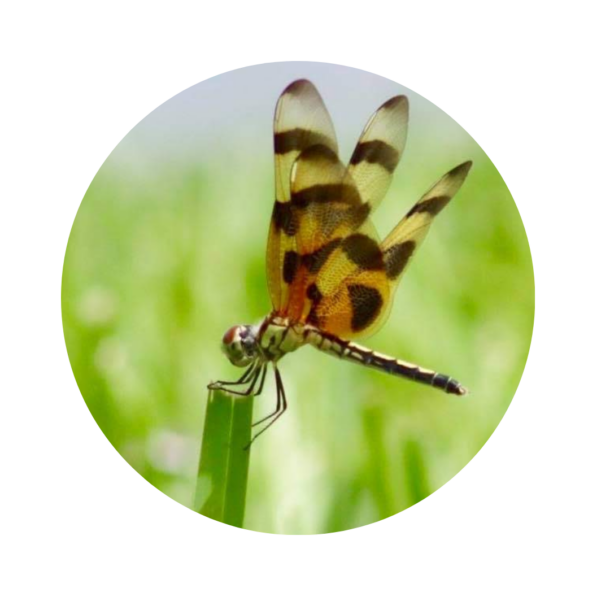Spring has sprung, and telltale signs in the forest are revealing themselves everywhere.
Everywhere, leaves begin to form on trees and shrubs. These trees react to a change in light duration, known as photoperiods, when shorter nights and longer days of sun exposure spur new growth. Sunny forsythias bloom in bright yellow colors. Magnolia trees are blossoming in shades of pink, fuchsia, and purple. Snowdrops, crocuses, daffodils, hyacinths, and dandelions peep out from the ground in response to milder temperatures.
The forest and wildlife are awakening. Birds are returning from migration and settling back into their northern homes. They perch in trees, readying their nests, and scuttle close to the ground in search of food. A chorus of bird calls reverberates, a cheerful early morning alarm clock for all. Right now, the various birds that inhabit these forests are easy to spot in the sparse forest canopy.
Here is what we discovered during our last nature adventure. What will you find on yours?

Watching Earth’s creatures in spring is fascinating.
There are many online resources you can access to learn more about the beauty around us:
Check out a “Sky Dance.” The American Woodcock, native to North America, puts on quite a show to capture a female’s attention. Aldo Leopold writes about these fascinating birds in his book, A Sand County Almanac. American Woodcocks are swift in the air and are difficult to photograph, as they blend into the natural colors of the woodlands this time of year. Check out the American Woodcock’s most unusual mating ritual here. One videographer even set their mating dance to music!
Listen to spring peepers. American Tree Frogs, also known as “spring peepers,” produce their loud mating calls in the early dawn and late dusk hours. They inhabit and breed in secret isolated vernal pools, which are temporary bodies of water created from melting snow and rainwater. You can learn more about vernal pools and wildlife’s dependency on them on our One Planet Life post.
Marvel at spectacular spring ephemerals. Dainty, delicate spring flowers are peeping from the forest floor and walking trails. These early flowers, known as spring ephemerals, only bloom briefly. They announce the start of the spring season and dapple the forest with color. Violets grow near decomposing logs among ancient mosses. It is indeed such a wonderfully enchanting time to spend in the forest. Take a walk, see the forest come alive, and appreciate the beauty of spring growth maturing into lush green landscape.
Special Sights to Look For
As you go along your nature walks this spring, look for scattered clumps of garlic chives, elf cups, and buds of plants that are forming. See if you can spot purple dead nettle, an edible leaf which is part of the mint family. Mullins, Poison Hemlock, Garlic Mustard, and Wild Roses are just a few of the many species waking up from their winter slumber.
You can learn even more about spring ephemerals, birds, amphibians, and more by participating in park events near you. Most of these local programs are free and can help you become a citizen scientist. Understand the timing events of our natural world and help your community collect data for research and education. Get out there and experience the beauty of spring!

Written by Yvonne Dwyer
Master Naturalist and OPL Content Contributor
“It is truly an honor for me to be a contributor to One Planet Life. By sharing my experiences and lifetime of learning, I hope to inspire conservation, sustainability, stewardship, and awareness of enjoying the natural wonders of the world for the wellbeing of people and the planet.”










